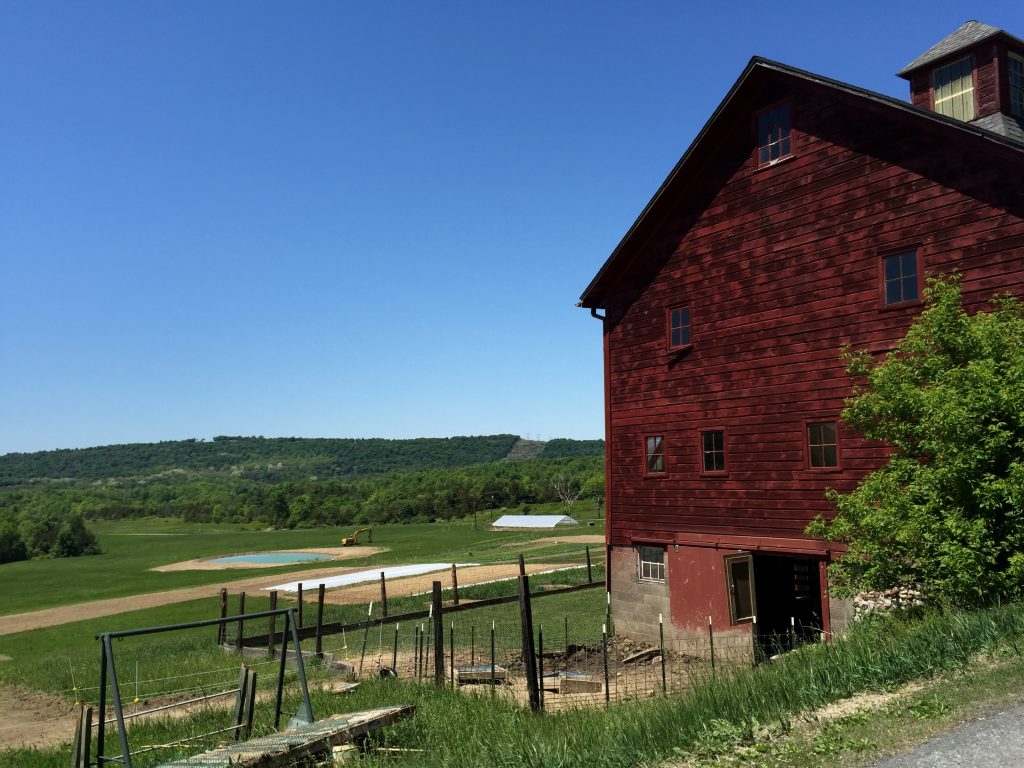
Photo: Amy Krane
I spend a lot time driving around Columbia County NY where I live, admiring the red barns. There are so many beautiful ones, both vintage and new. Many people choose a classic barn red for their home as well. Like all colors, the light greatly affects the appearance of the red. The same red will look completely different on a sunny versus cloudy day, front, back or side lit, facing north or south.
There are numerous fables about the origin of the red used on barns in the U.S. One story relates that iron oxide or rust was added to linseed oil and painted on the wood siding to protect the structure from fungus and mold. Another hypothesis suggests that wealthy farmers who could afford to slaughter animals for meat, mixed some blood with the oil and painted the barn red as a show of wealth.
There is a tradition of red homes in Sweden and Finland going back hundreds of years. Many of these immigrants settled the American heartland. The red is called Falu Röd. This tradition developed near an iron ore mine in Sweden. The iron ore was fired which created a by-product, hematite which is called rödmull ( ~ red soil). This was piled up beside the mine. It was noticed that a wooden pole that had been sitting for years in the mound of rödmull showed no sign of rot or decay. This was the start of the production of Falu Röd (Falun’s Red), the paint that soon was on almost every house in the country, since it was cheap and could be mixed on site, boiling rödmull and linseed oil with rye flour and water. The deep red color of Falu Röd is still popular in Sweden and Finland. (Explanation courtesy of “swedish freak”). It is a brighter red than the American barn red and must look incredibly arresting in the northern light of Scandinavia.
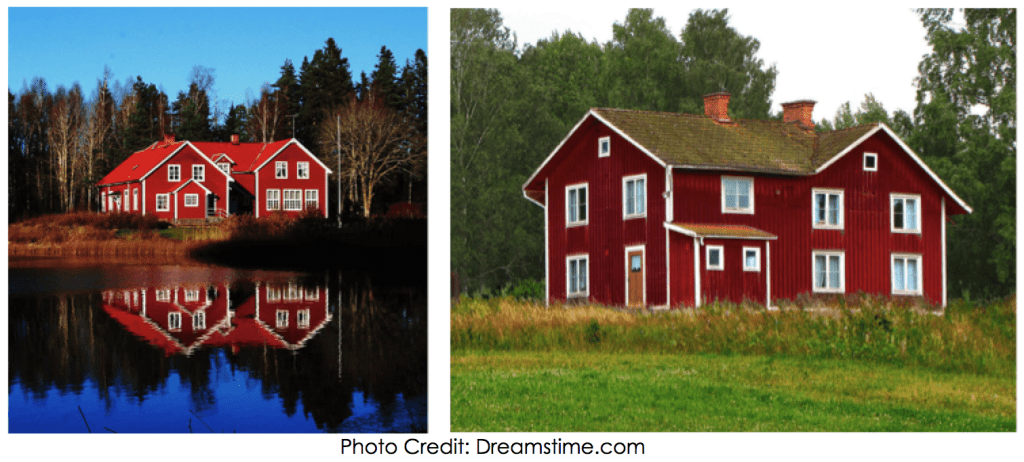
Swedish Red Houses
There are many versions of America’s barn red and it can be achieved using stain or paint. Every paint and stain manufacturer carries as least one option, most have many more. While it can be categorized as a brick red the best options are on the deep side and have some yellow undertones, creating a bit of an orange cast. The very best options have a bit of blue in it as well. Problems arise when the red skews too pink, orange or purple. The key to success, like with all color for architectural use, is to test the paint or stain before applying it to the whole building. A mistake will be costly and a building which looks too orange, pink or purple just doesn’t cut it. Take a look at some less than optimal color choices. All photos by Amy Krane unless otherwise noted.

Barn red with a raspberry, purple cast
Note the above color has too much blue in the red creating a raspberry tone.

Barn red too orange
These barns have too much yellow in their formulation creating a decidedly orange looking barn.
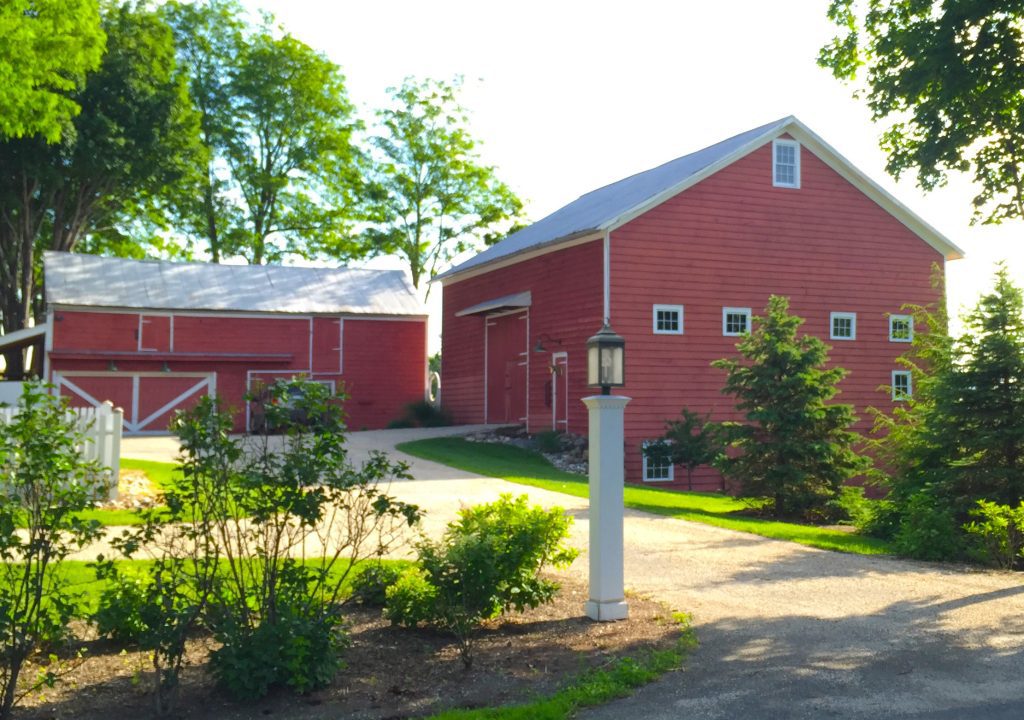
Pink Barn
These barns above appear too pink.
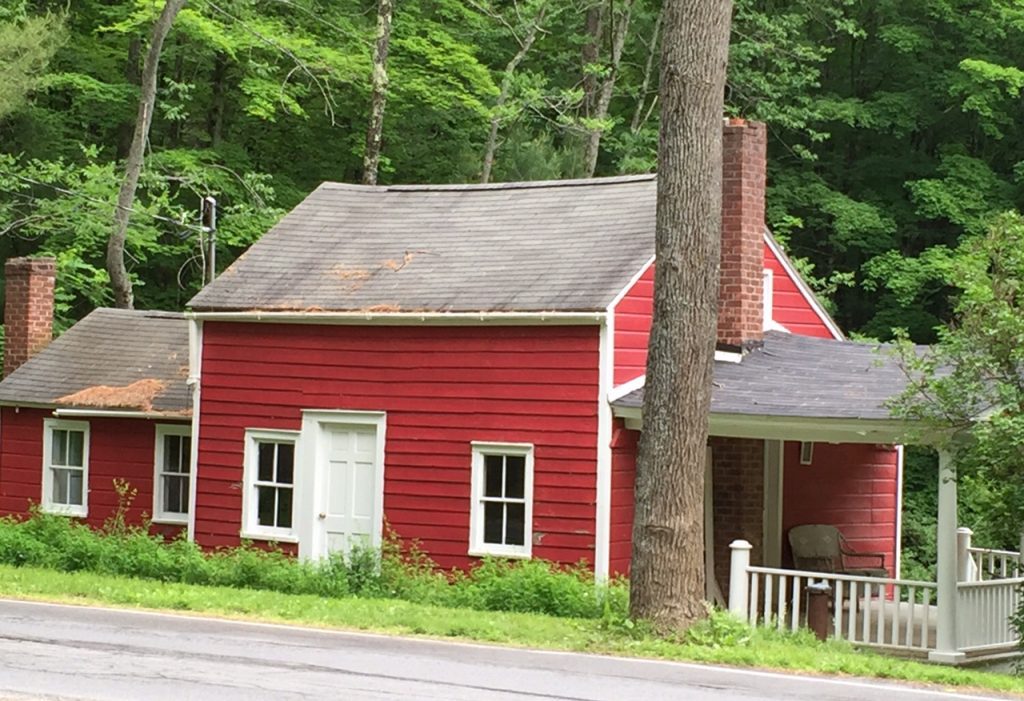
Too bright and too pink and orange
This home is a brightly saturated red with notes of both pink and orange. It’s not subdued enough.
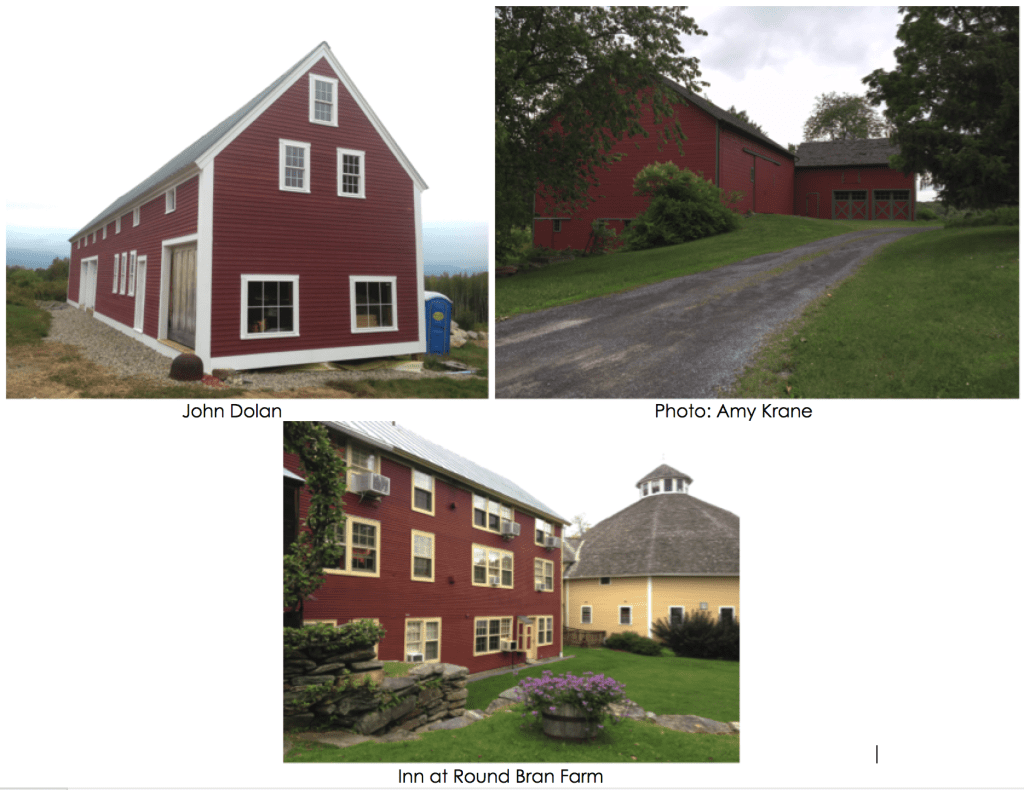
Trim ideas for red barns
Above are 3 trim choices for a red barn. Many red barns are not trimmed in another color at all and look great. White is a very classic choice creating a crisp look. The barn on the top right is trimmed in a greenish, grey-ish, taupe color creating a very elegant color combination. As an exterior color consultant I wouldn’t choose yellow customarily to trim a red building, the yellow trim at the Inn at Round Barn Farm picks up the yellow from the round barn and ties the house to the barn by its use.

Too many trim colors
The inclusion of both white and black trim above creates an unappealing mash up.
Now take a look at some winning barn reds.
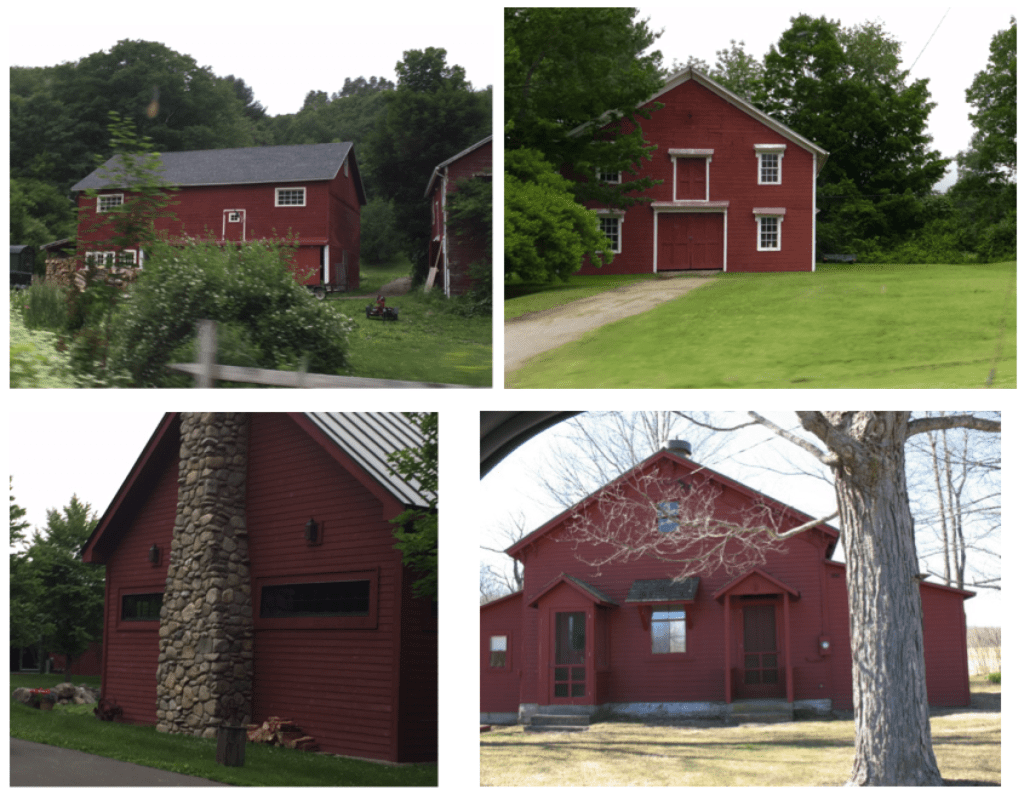
Beautiful Barn Reds
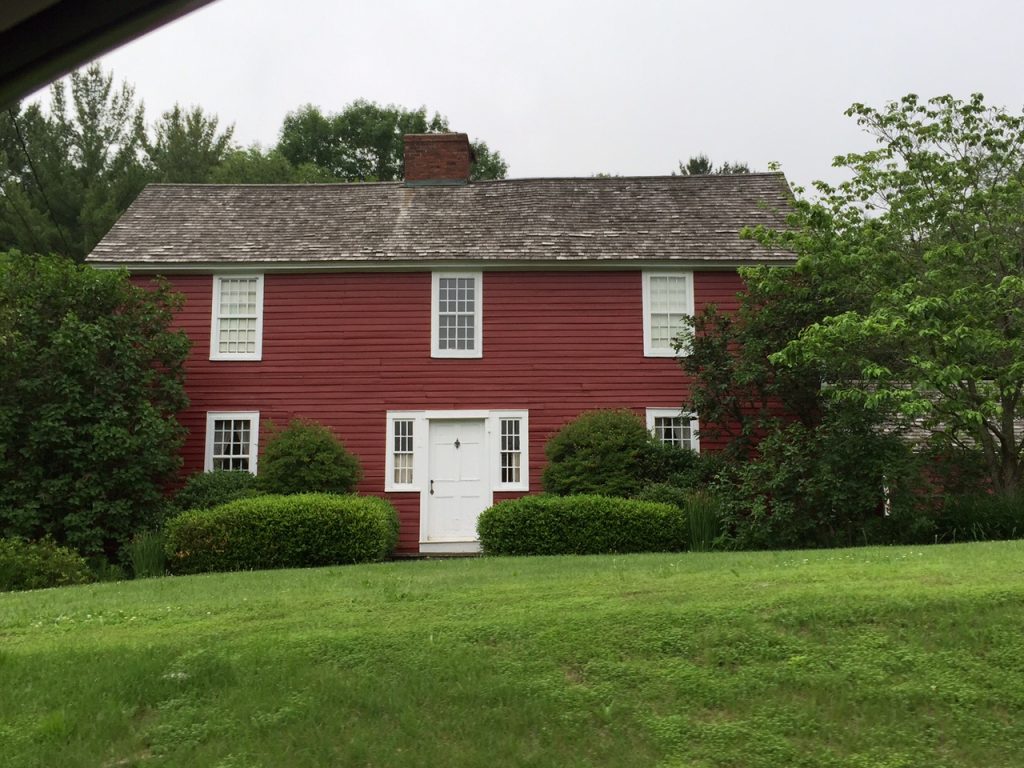
Historic home in barn red

